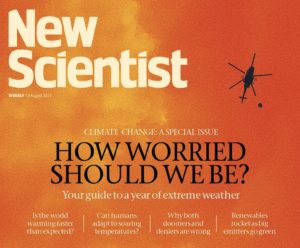by Alexander, Sep 2023 , in GWPF
Executive summary
This report refutes the popular but mistaken belief that today’s weather extremes are more common and more intense because of climate change, by examining the history of extreme weather events over the past century or so. Drawing on newspaper archives, the report presents multiple examples of past extremes that matched or exceeded anything experienced in the present-day world. That so many people are unaware of this shows that collective memories of extreme weather are short-lived.
Heatwaves of the last few decades pale in comparison to those of the 1930s – a period whose importance is frequently downplayed by the media and environmental activists. The evidence shows that the record heat of the 1930s was not confined to the US Dust Bowl, but extended throughout much of North America, as well as other countries such as France, India and Australia.
Major floods today are no more common nor deadly or disruptive than any of the thousands of floods in the past, despite heavier precipitation in a warming world (which has increased flash flooding). Many of the world’s countries regularly experience major floods, especially China, India and Pakistan.
Severe droughts have been a continuing feature of the earth’s climate for millennia, despite the brouhaha in the mainstream media over the extended drought in Europe during the summer of 2022. Not only was the European drought not unprecedented, but there have been numerous longer and drier droughts throughout history, including during the past century.
Hurricanes overall actually show a decreasing trend around the globe, and the frequency of landfalling hurricanes has not changed for at least 50 years. The deadliest US hurricane in record- ed history, which killed an estimated 8,000 to 12,000 people, struck Galveston, Texas over 100 years ago in 1900.
Likewise, there is no evidence that climate change is causing tornadoes to become more frequent and stronger. The annual number of strong (EF3 or greater) US tornadoes has in fact declined dramatically over the last 72 years, and there are ample examples of past tornadoes just as or more violent and deadly than today’s.
Wildfires are not increasing either. On the contrary, the area burned annually is diminishing in most countries. Although wildfires can be exacerbated by other weather extremes such as heatwaves and droughts, those extremes are not on the rise as stated above.
The perception that extreme weather events are increasing in frequency and severity is primarily a consequence of modern technology – the Internet and smart phones – which have revolutionised communication and made us much more aware of such disasters than we were 50 or 100 years ago. The misperception has only been amplified by the mainstream media, eager to promote the latest climate scare. And as psychologists know, constant repetition of a false belief can, over time, create the illusion of truth. But history tells a different story.
…


